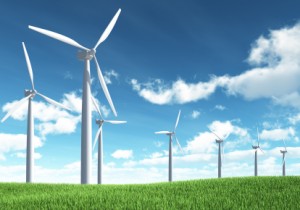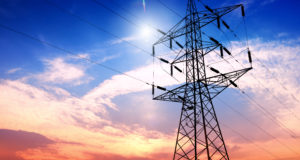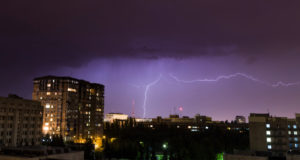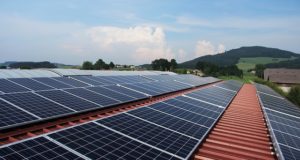 There are a number of factors to consider when researching whether a wind turbine is the correct choice for your home’s off-grid power source. Issues such as your home’s overall power need, the location and topology of your property, and your budget will determine whether a wind turbine is appropriate for you.
There are a number of factors to consider when researching whether a wind turbine is the correct choice for your home’s off-grid power source. Issues such as your home’s overall power need, the location and topology of your property, and your budget will determine whether a wind turbine is appropriate for you.
Before reviewing your power requirements, first determine if your property has an appropriate space for a turbine. If your property does not receive a reasonably constant breeze, a turbine will not provide you with enough power. To determine whether your property meets this requirement, either hire an energy consulting service to test it or purchase/rent a recording anemometer—a device that measures wind speed. Measure wind speed at various locations on your property, in different seasons and in varying weather conditions for optimal results.
In order to produce usable energy, a turbine needs to receive a minimum wind speed of 7-10 mph. However, this “cut in” wind speed is not sufficient for most turbines to produce their optimal amount of power. Turbines have a rated speed, which is the wind speed required to produce maximum power. Rated speeds range from 25 to 35 mph, and turbines generally have a fail-safe that shuts them down if wind speeds exceed 45 mph.
The wind test will help determine if you have a clear area on your property that receives reasonably constant wind speeds of between 25-35 mph. If you do, your turbine will be able to provide you with the maximum power possible for that model. If you do not, you will have to estimate the amount of power the turbine can provide. Power graphs for various models are available online, and you can determine turbine wattage output based on average wind speed.
If you do not have an energy company available and cannot access a measurement device, wind maps are available online. These maps show general wind speed averages for different regions of the United States. Some locations have little to no information available on these maps, but they can provide estimates for a significant portion of the country.
If you have a suitable location for a turbine, the next step is to determine your household’s power requirements. Review your monthly electricity bill to determine your overall needs. Divide the monthly total by the number of days in the billing cycle to obtain a rough average of how much power your home needs every day. If you need to obtain a yearly total, add together 12 months worth of your bills or multiply the highest monthly total by 12 so as not to underestimate the amount.
Small Wind vs. Big Wind
Small wind is classified as any wind turbine that produces 300 kilowatts per hour or less. Different models in this category range between rooftop models that produce 200 watts of power to 75-meter towers that can produce over 250 kilowatts per hour. While small rooftop models may seem like a good deal—your turbine does not take up valuable land but still supplies free power—these smaller models are only good for supplying minimal power requirements such as irrigation systems, running one appliance or recharging batteries, or when supplementing another form of power such as the grid or solar panels. The maximum power output for rooftop models is less than one kilowatt per hour, and this is not sufficient to handle the full load for an average home.
Small towers are likewise constrained in application. As with rooftop models, the tower’s lesser height limits the possible turbine blade length. This restricts the amount of power that the model can provide, even if you have constant wind within the turbine’s rated speed range. If you choose to place a small turbine on a tall tower, it will also restrict the machine’s power capacity.
Big wind is considered as any turbine that produces over 300 kilowatts per hour, which includes turbines that can produce more than one megawatt of power. Towers that produce more than one megawatt per hour are generally used in wind farms to produce energy for the grid, and not for residential purposes. Towers that produce between 100 kilowatts to one megawatt per hour are good choices for a homeowner or business owner who wishes to get off the grid.
Carefully review your kilowatt requirements and compare them to available wind turbine models. To fully power an off the grid home or farm, you may require a tower that provides 300 megawatts of power. Consult with a wind power professional to ensure that your chosen model will adequately suit your needs. In addition, as wind speeds vary, you should consider purchasing batteries or a generator for backup power in case the wind is too weak or strong for your turbine to function and power your home, farm or business.
 Off The Grid News Better Ideas For Off The Grid Living
Off The Grid News Better Ideas For Off The Grid Living




